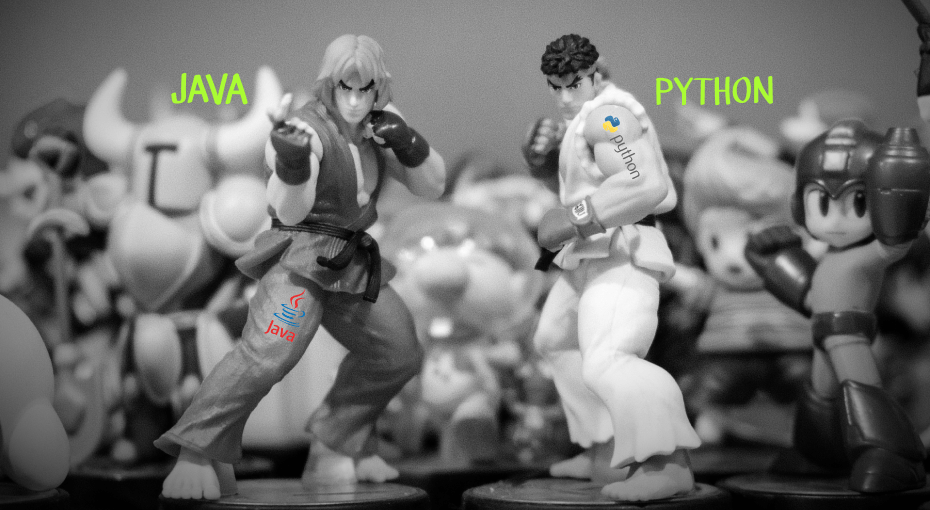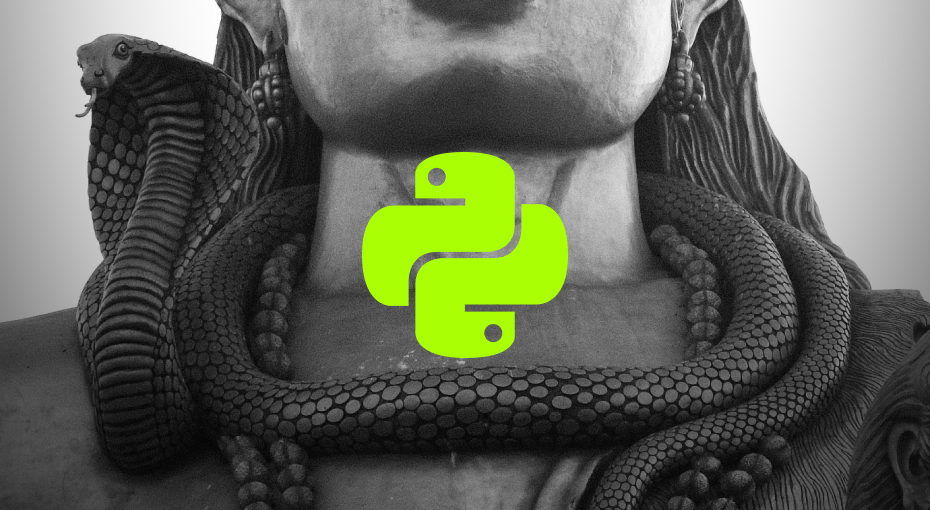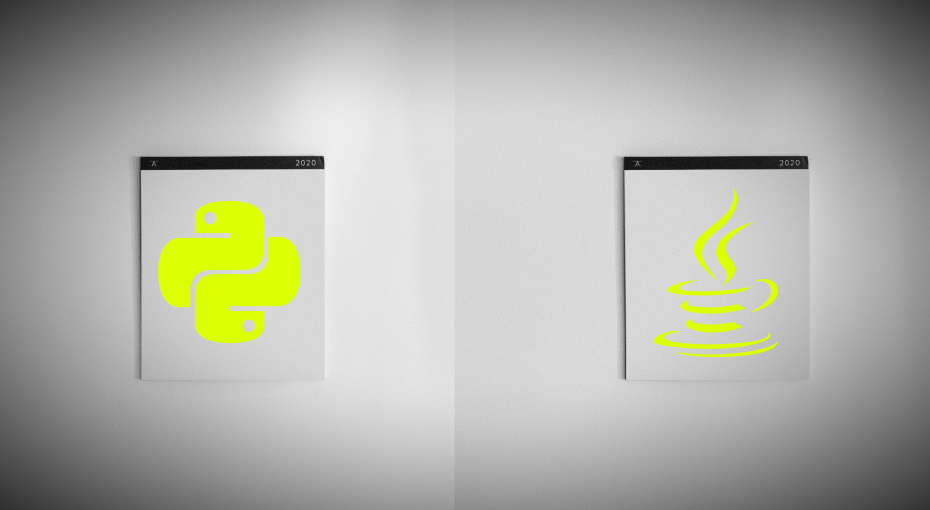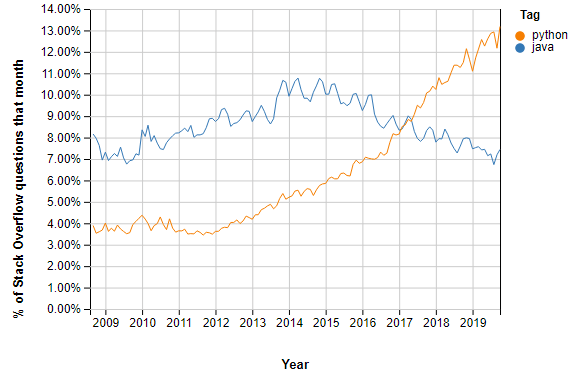The year 2023 continued the booming application development trend, concisely expressed in the line “Everything you need needs an app.” Boosted by the (post-)pandemic demand of the people secluded in their homes and unable to communicate live, application development continues to skyrocket. So, it’s the most logical and wise step for junior and senior front-end and back-end website developers to find the best programming language for impactful applications. Nevertheless, choosing between Java vs. Python is often difficult and confusing.

Our article helps you to decide and compare responsibly. Firstly, we will describe essential Java and Python tools and major frameworks, explaining which is best for practical applications. Secondly, some graphs and statistical data will show you yearly popularity fluctuations. Finally, we will describe every Java and Python advantage in the illustrious table to make it even more transparent. So, let’s start with essential features and tools — to help you judge the Java vs. Python fight and convert insecurity into business shrewdness.
Java

Code: lengthy lines, operators, and blocks
Dynamic/static: static, contrary to Python, it’s necessary to indicate data types
Syntax: blocks in curly braces, semicolons at the end of lines & the whole program
Portability: JVM (Java virtual machine) is standard and available everywhere
Speed: Java is faster than Python
Easy: No
Backend frameworks: Spring and Blade
Machine learning libraries: Weka, Mallet, MOA, Deeplearning4j
Game development engines: JMonkeyEngine
What are the top features of Java?
- Inspired by C and C++ languages.
- Its apps are highly interactive and responsive.
- It was meant to be WORA (write once, run anywhere) language on any platform with minimum restrictions due to JVM (Java virtual machine).
- A fully object-oriented language.
- Supports multiple open-source libraries.
- Characterized by static-typing syntax — less prone to errors, a lot easier and faster for compilation than dynamic-typed one, has several available frameworks for quick app building.
- Using Java for app development is appropriate and handy.
What famous websites are built on Java?
Cash App, Twitter, Airbnb, Pinterest, Spotify
Java is a trendy choice for web development (mostly among seniors). It is an excellent option for Desktop GUI applications, Enterprise Solutions, Embedded Systems, and web app services. What is more, it has the NLP community that will gladly give you a helping hand. Thanks to its robustness, Java is usually the prime option for business enterprises and big corporations.
The next in line is Python — conquering the IT market with the rapidness of a snake (pun intended).
Java is the best for:
- Mobile applications;
- Big-scale enterprise solutions;
- Desktop GUI apps.
Python

Code: small lines, semicolons not used
Dynamic/static: dynamic, you don’t need to declare variable types
Syntax: indentation required (mainly for readability), braces are not
Portability: yes
Speed: slower than Java (interprets variables and types on the run)
Easy: Yes
Backend frameworks: Django and Flask for building apps
Machine learning libraries: Tensorflow, Pytorch Machine Learning Library
Game development engines: Cocos, Panda3d
What are the top features of Python?
- A high-level and user-friendly language with syntax and operators resembling ordinary English.
- An interpreted language (unlike C++ or Java): executes code line by line. Thus, it is easier to debug it (also line by line).
- Stresses on the DRY (Don’t Repeat Yourself) principle (each function has its unique chunk of code).
- Like Java supports object-oriented and functional programming features, unlike Java, which supports multiple inheritances.
- Python code runs on different kinds of OS (make sure it does not contain system-specific peculiarities).
- This language is extensible. That means you can write parts of your code in it, embedding them into the different programming languages.
- Python has a vast collection of built-in libraries — for browsers, databases, image processing, document processing, etc. Therefore, you don’t need to download them separately. Python mobile development is, thus, easy and widespread.
- Its interpreter and resource library are freely available on the web.
What famous websites are built on Python?
Netflix, Google, YouTube, Quora, Uber, Dropbox, Pinterest
Now that we’re done with basic facts, it’s high time to dive into the information about frameworks and libraries — the cornerstones of the well-maintained app-building process.
What is the framework? It is very complicated to write your backend technology from the bottom up. Furthermore, it is extremely tough to fulfill all design requirements, making a reliable and effective script and product. That’s why developers created frameworks — abstractions in software allowing you to build your backend technology and apps without creating everything from scratch. The framework is built on top of the programming language, and when you use it, it calls the built-in code (on the contrary, when you use a code from some library, it calls the library function). Generally, frameworks include predefined classes, functions, and instruments to build applications faster and avoid reinventing the wheel and do your job quickly.
Python is the best for:
- Games;
- Image processing and graphic design;
- Language development;
- Machine learning apps;
- Operating systems;
- Prototyping.
Even when your business starts small, we know you’re thinking big. Spearhead the app revolution, beefing up your company with top tech talents — hire top engineers with us. Free yourself for greater deeds!
Difference between Java and Python
| Parameter | Java | Python |
| Compilation | Compiled | Interpreted |
| Dynamic/static types | Static | Dynamic |
| String operations | Limited | Multiple |
| Learning curve | Sharp & steep | Gradual |
| Multiple inheritances | Partly interface-based | Single&multiple inheritances |
| Braces & indentation | Each function is held within curly braces | The code is divided into blocks via indentation |
| Speed | Slower than Python | Faster than Java |
| Portability | Suitable for any PC or mobile with JVM. No Java interpreter needed | An interpreter needed |
Top frameworks: Java vs. Python
Top Java frameworks
- Spring – open-source framework to build Enterprise web apps.
- Struts – excellent for web apps, supports MVC (Model-View-Controller) model.
- Hibernate – Object-Relational-Mapping (ORM) database for Java apps.
- Apache Wicket – widely used framework with many components (reusable packages with images, buttons, forms, links).
- Java Server Faces – supports MVC framework, has reusable UI components for server-based apps, and supports drag-and-drop UI features.
Top Python frameworks
- Django – a free, open-source, full-stack framework that supports MVT (Model-View-Template) architecture.
- Flask – lightweight modular design framework for web apps, supports various features – built-in fast debugger and unit testing.
- Bottle – lightweight popular microframework to build APIs. Supports built-in HTTP servers and plugins for various databases.
- Web2py – full-stack framework including code editor debugger and one-click deployment, lets you manage errors.
- CherryPy – open-source microframework holding built-in multi-threaded server, integrated profiling, and testing support.
Python web frameworks are secure, scalable, and flexible. Moreover, Python’s Package Index has useful libraries like Requests, BeautifulSoup, Paramiko, Feedparser, and Twisted Python.
Python makes app development unbelievably fast because it’s practical and straightforward. If you aim at speed, Python is most likely the best solution. App development with Python is a piece of cake. Java projects tend to take longer and may require larger development teams. Building an MVP (Minimum Viable Product) in Python might be fast (in a matter of weeks), while in Java, the same process would probably take months. Besides, Python greatly simplifies customized solutions by supporting data analysis and visualization tools. Hopefully, all the mentioned facts will help you make up your mind in the evergreen struggle — Java vs. Python — and find your special software junior or senior developer with tremendous skills.

Who uses Python and Java?
Python is the best option for new programmers entering a data scientist role. They enjoy employing big machine learning and data processing libraries (PyTorch, TensorFlow, Pandas, Matplotlib). Moreover, Python also offers perfect data visualization options via Seaborn.
Java is a variant for web developers eager to work with enterprise-level programs. It grants wide possibilities in asynchronous programming and access to blooming NLP communities.
Java vs. Python: popularity over years
Nothing better serves us in comparison than a few illustrious graphs. Naturally, they can’t resolve such a profound issue as choosing the best programming language for web apps that will potentially change the world in a blink of an eye, but if you need a few statistics, we’ll gladly provide you with them.
Look at the graph below. For the last couple of years, Python and Java have been running cheek-by-jowl: back in 2014, Java was twice as popular, but in 2018, Python started gaining momentum and is now more popular than Java. The situation is unstable: it depends on the development of the language functionality and the success of the applications and projects built using this language. Java application development is promising, but Python doesn’t trail behind.

According to Google Trends (analyzing mentions and statistics for each search term), back in 2004, nothing beckoned for nowadays booming Python popularity, and Java was on the throne. Nevertheless, the situation has changed drastically: Python is earning its points, and Java’s mentions have met a rapid fall. Put it in the context of the previous graph, and everything starts appearing logical.

To make everything even more precise, let’s sum it up in two lists — one for Java and the other for Python. Whom will you look for — Java or Python, junior or senior, back end or front end developers? Make up your mind!
Java vs. Python: to each their own

Stackoverflow’s 2020 developer survey showed Python as the fastest-growing programming language after taking over C# and PHP. Such surveys still rank Java above Python (45% of developers for the former, 39% for the latter). However, that gap is rapidly closing (see graphs above).
One can use both languages in back-end web development (creating the software on servers). What is the difference? Java is comparatively faster, but Python is better for lengthy programs. Python will be better if you start with IT and choose the language for further app development since its learning curve is somewhat more gradual than Java’s. All in all, everything depends on the type of programs and projects you will create. Python might be a more suitable option if you start investigating natural language tasks due to its vast NLP toolkit. In case you are into enterprise-level business programs, maybe it’s high time to look at Java.
Alas, there’s no such thing as the universally best programming language. No language is perfect for all the possible tasks: too many variables influence the outcome. All in all, the best language meets the maximum of the program requirements — so before deciding about the language, consider the core details of your future project. Suppose you’ve already completed the project outline and have been looking for devs with specific roles and responsibilities to bring it to life. So, the outcome of the Javs vs. Python battle is clear to you. In that case, it’s time to examine the world of bidding and vetting marketplaces where you can choose the most suitable candidates.

Nowadays, one can come across multiple surveys of online freelance platforms — generally, they help create an overall picture of the web market and give you the background for the informed choice. One of the most comprehensive analyses overviewing possible pros and cons and performance issues is given by Lemon.io. Hopefully, you’ll decide who is the winner in this battle of Java vs. Python. No matter what you choose and what software developer will be the best for your project, remember: the world of apps is rapidly expanding, and to make your project noticed, you’d better be top-notch!










